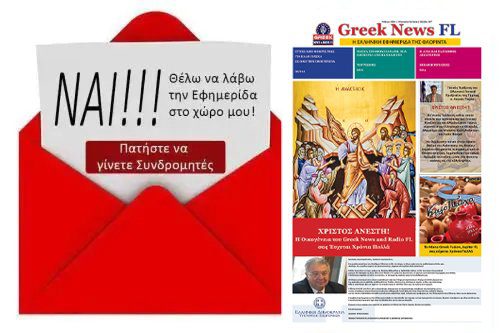Our visit to Palace of the Goats takes us thousands of years back to 336 BC, when the king Philip II he organized here a brilliant celebration for his daughter's marriage to Alexander of Epirus, showing everyone his omnipotence.
The palace grounds opened to the public in January 2024, while restoration work continues. I hastened to visit him and see this unique place up close.
The palace was built in the years of Philip between 359 and 336 BC, on a plateau, at the foot of the Acropolis hill, above Vergina and is the largest and, together with the Parthenon, the most important building of classical Greece. It spreads over an area of 9.250 sq.m. while much of the building was two-story, it had an impeccable drainage and water supply system and impressive mosaics. In 168 BC, the Romans, after occupying the Macedonian Kingdom, destroyed the palace and the city of Aige. In 1855 the Palace was discovered by the French archaeologist Leon Heze.


Approaching the archaeological site of the palace, we stop for a while to admire the centuries-old oak tree that dominates the site. The large rectangular building was oriented according to the geographical axes and its entrance was on the eastern side. The facade was shaped in an innovative way for the time with the monumental propylon in the center of an impressive Doric colonnade. The combination of the Doric and the Ionic style, (also found in the Parthenon) is the architectural trend of the time in Macedonia.
The large courtyard in the center was the center of activity and comfortably accommodated more than 2000 people. On the north side are banqueting and men's areas (men only), with mosaic floors. A large terrace with a panoramic view of the city and the plain stands out, which is another innovation of the palace. On the floor that existed on the east side as well as on the west side, the women's apartments and the dormitories should have been located, as usual. The Corinthian-style tiled roof was particularly impressive and luxurious.
Due to the season, unfortunately the mosaic floors were covered with sand, to protect them from the elements. But I hope to enjoy them on my next visit to the site, as I am informed they will be revealed during the summer months. One of the mosaic floors is preserved in very good condition. As I read it is made of tiny white, black, grey, yellow and red pebbles and resembles an elaborate carpet with a striking flower in the center, surrounded by intricate sprouts and flowers. Blonde fairies, half women – half flowers, sprout in the corners, varying the whole with a pleasant note of liveliness and grace.



Philip II, as we know, after definitively neutralizing the predatory raids of the Balkan peoples that surrounded Macedonia, created a great state with relations of alliance, servitude or submission with the Illyrians, the Paeons, the Triballi, the Thracians, the Getae and the Scythians, which included the largest part of the Balkan peninsula from the Ionian to the Black Sea, while in the south it reached Thessaly. Then in 338 BC, after the battle of Chaeronea, Philip with the establishment of a federation of Greek states, known as the Congress of Corinth, headed by himself, managed to unite the Greeks and undertook to conduct a campaign against Persia.
Thus the palace of the king of the Macedonians, the ruler and commander-in-chief of the Panhellenic people, the only palace of classical Greece that we know, being the seat of political power and at the same time the center of intellectual creation, becomes a true monument of magnificence, functionality and mathematical purity, creating the model of the ideal residence and being the archetype of the building with a peristyle that will seal it architecture of the Hellenistic world and it will be repeated thousands of times throughout the Hellenistic world.
After the conquest of the Kingdom of Macedonia by the Romans, in 168 BC, the palace was destroyed, as was the entire city of Aigai, and was never rebuilt. The Goats disappear and are forgotten, yet the memory of the royal house lives on in the Byzantine name Palaces, as the village next to it is also called Vergina.
After visiting the palace I couldn't help but visit it one more time Museum of the Royal Tombs of the Goats in Vergina. A museum built around the royal tombs, which externally takes the form of an earthen mound. The treasures found in the royal tombs have been exhibited there since 1997. With the revelation of the royal tombs of the Goats by the archaeologist Manolis Andronikos and his excavation team in 1977, conservation of the famous frescoes that decorated them immediately began. To protect the royal tombs, an underground building was built in 1993 that enclosed the ancient monuments to protect them, keeping the temperature and humidity conditions constant, which is necessary to save the frescoes.
We descend the stairs that lead to the entrance to the tomb of Philip II and are dazzled by the beauty of the fresco on the theme of the rapture of Persephone and its impressive colors, still alive today. The portraits of the two kings, Philip and Alexander, are depicted in the painted scene of the sacred hunt on the facade of the tomb and on the chryselephantine bed of the chamber.
In the dark area of the museum, Macedonian treasures are impressively displayed in glass cases. The golden urn, the golden elaborate wreaths, the wonderful jewels and many other impressive finds dazzle us with their brilliance and beauty. The evocative atmosphere of the space creates a supernatural connection with our Macedonian ancestors.










I read that the golden urn weighs 11 kg. It is decorated on its cover with the Macedonian star and on its sides with floral jewels and rosettes. The golden oak wreath it is the heaviest wreath that survived from Greek antiquity. It consists of 313 leaves and 68 acorns and weighs 714 grams.
There was one more museum left to visit: the Central Museum of Goats was inaugurated in the winter of 2022. In a simple, white and unnecessary environment, the Museum builds with its exhibits a living narrative of the life of the Macedonian kings of the 6th - 4th centuries BC. We start our tour from the space that hosts the exhibits from world of Macedonian men, since the boar hunt marked the coming-of-age ceremony for every young man, who to be considered a proper man had to kill a wild boar. We admire a multitude of gold and silver coins of the entire then known world, marble statues, iron spearheads, black shaped kraters from the luxurious banquets of the Macedonians, oil pots and stelegides (peculiar scrapers, with which men were cleaned of oil, sweat and dust after exercise), small iron knives (which were also used as razors), clothespins, simple men's signet rings and weapons.
In the women's area jewelry and clay teats are presented (the baby bottles of the time, on the "nipples" of which traces of bites can be seen), perfume containers, even eyebrow tweezers. Ornate jewellery, gold and silver earrings adorned with snake heads (associated with the cult of Dionysus) or lotus buds, necklaces with beads of gold, amber, glass, ivory and copper, bracelets, bronze hairpins, bronze compass covers used as powder cases or jewelry cases, bronze arched buckles, enliven the life of the woman in Macedonia, who, according to the archaeologist Mr. Kottarides, "in archaeotrope Macedonia, which is close to the morals of the Homeric epic, it may, more than in democratic Athens, be queen in her world". Basic material for body and hair care was olive oil. Perfumes, aromatic oils, ointments, arrived in Macedonia from all over the ancient world (Corinth, Ionia, Rhodes, Egypt and Phoenicia), in elaborate perfume containers.
Arriving in the last room with the burial finds, which were saved from the remains of the fires of queens and kings, the attention is stolen by the gold jewelry of the "Miss of the Goats" and the mysterious clay heads of demons, which were probably associated with some kind of ritual. Of course I photographed all this wealth which is a feast for the eyes.
The palace of Philip II, the necropolis and burial complex of the Temenids, which spreads over an area of almost 550 acres, the visitable tree-planted archaeological and naturalistic tour, the Museum of the Royal Tombs, the ancient theater, the church of Agios Demetrius, and the Central Museum, constitute it Multicenter Museum of Goats.
How can I describe the awe that occupies the visitor in these places!... Only by visiting the place ourselves can we perceive the greatness of the Macedonians and their achievements.
Don't be late to visit Vergina and the surrounding archaeological sites of the glorious Goats! The area has so much to show, even more than I could present you with words and photos.
Text and photos: Magdaleni Ap. Poungoura
Visual artist - Photographer - Tourism & Culture Journalist















































